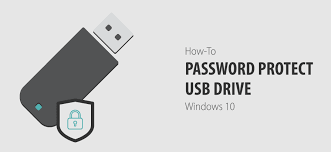7 Tips To Help You Password Protect Your Windows 10 Accounts

7 Tips To Help You Password Protect Your Windows 10 Accounts
1. Use a strong password. A strong password is at least 8 characters long and includes a mix of uppercase and lowercase letters, numbers, and symbols. Avoid using easily guessed words like “password” or your name.
2. Don’t use the same password for all your accounts. If someone gets hold of your password, they will have access to all your accounts. Using different passwords makes it more difficult for someone to guess all your passwords.
3. Use a password manager. A password manager is a program that helps you generate and keep track of strong passwords. Many password managers can also help you fill in online forms and remember your login information.
4. Change your passwords regularly. Even if you have a strong password, it’s a good idea to change it every few months. This way, even if someone does manage to guess your password, they won’t be able to use it for very long before it’s changed again.
5. Enable two-factor authentication whenever possible. Two-factor authentication adds an extra layer of security to your accounts by requiring you to enter both a username and password as well as another piece of information, such as a code sent to your phone or generated by an app on your phone.
6. Be careful about what information you share online. Be cautious about what personal information you share on social media or other websites. Hackers can use this information to guess your passwords or answer security questions
python on windows
Python is a versatile scripting language that can be used on many different operating systems, including Windows. While most people think of Linux when they think of Python, it can actually be a great tool for Windows users as well. Here are some tips to help you password protect your Windows 10 accounts:
1. Use a strong password. This may seem obvious, but it’s worth repeating. A strong password is the first line of defense against anyone trying to access your account. Make sure your password is at least 8 characters long and includes a mix of letters, numbers, and symbols.
2. Never reuse passwords. Once someone has your password, they can access all of your account information. That’s why it’s important to never use the same password on more than one account. If you’re worried about forgetting multiple passwords, consider using a password manager to keep track of them for you.
3. Enable two-factor authentication. Two-factor authentication adds an extra layer of security to your account by requiring you to enter a code from your phone in addition to your password when logging in. This makes it much harder for someone to hack into your account, even if they have your password.
4. Keep your software up to date. Outdated software is one of the biggest security risks out there. Make sure you always keep your operating system and any other software you use up to date with the latest security patches.
5. Use a secure connection. Whenever
python installer windows
1. Use a strong password for your Windows 10 account. A strong password is at least 8 characters long and includes a mix of upper and lower case letters, numbers, and symbols.
2. Use a password manager to help you keep track of your passwords. A password manager can help you create and remember strong passwords for all of your accounts.
3. Enable two-factor authentication for your Windows 10 account. Two-factor authentication adds an extra layer of security to your account by requiring you to enter a code from your mobile phone in addition to your password when logging in.
4. Keep your Windows 10 software up to date. Microsoft regularly releases security updates for Windows 10, so it’s important to keep your system up to date in order to benefit from the latest security improvements.
5. Install security software on your computer. In addition to keeping your Windows 10 software up to date, you should also install security software such as antivirus and antispyware on your computer.
6. Be cautious when opening email attachments or clicking on links in email messages. Email is one of the most common ways that malware is spread, so it’s important to be careful when opening attachments or clicking on links in email messages.
7. Backup your important files regularly. In the event that your computer becomes infected with malware, having a recent backup of your important files can help you recover more quickly and easily.
how to install python on windows 10

Python is a versatile language that you can use on the backend, frontend, or full stack of a web application. In this article, we’ll show you how to install Python on Windows 10.
There are a few ways to install Python on Windows 10. The most common way is to download the official installer from the Python website. However, if you’re using an older version of Windows, you can also install Python from third-party sources.
Once you have downloaded the installer, double-click on it to start the installation process. On the first screen, you’ll be asked whether you want to install for all users or just for yourself. Choose the option that suits your needs and click Next.
On the next screen, you’ll see a list of optional features that you can install. For most users, the default options will be sufficient. However, if you’re planning on using Python for development purposes, you may want to select the “Add python.exe to Path” option. This will ensure that you can run Python scripts from any location on your computer.
Once you’ve selected the features you want to install, click Next and wait for the installation to complete. Once it’s finished, you’ll be able to launch Python from the Start menu or by running “python” in a command prompt window.
